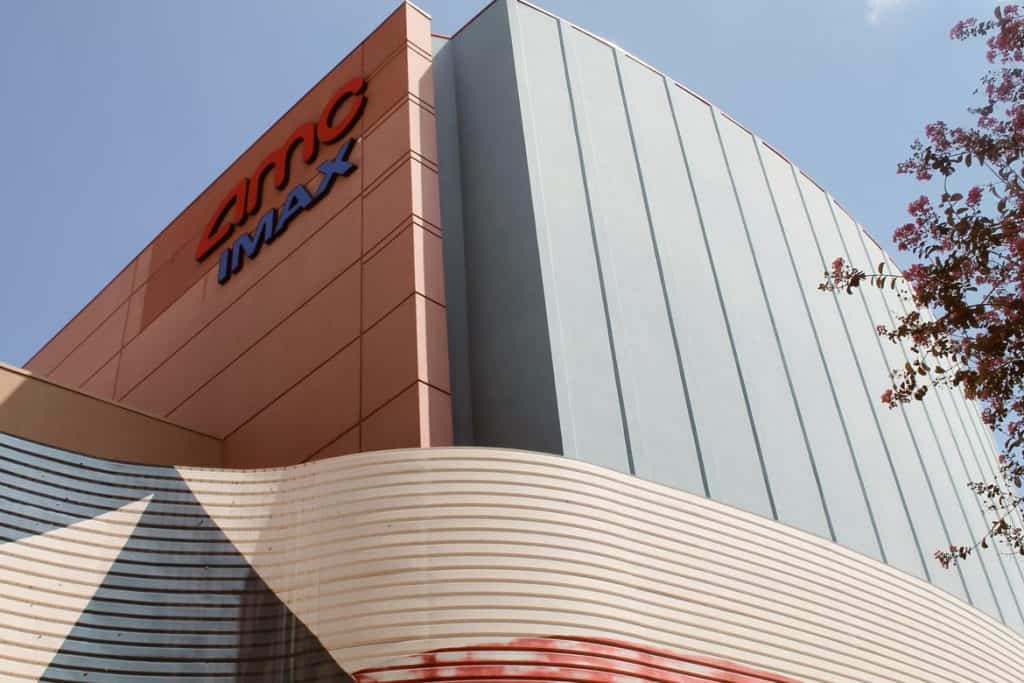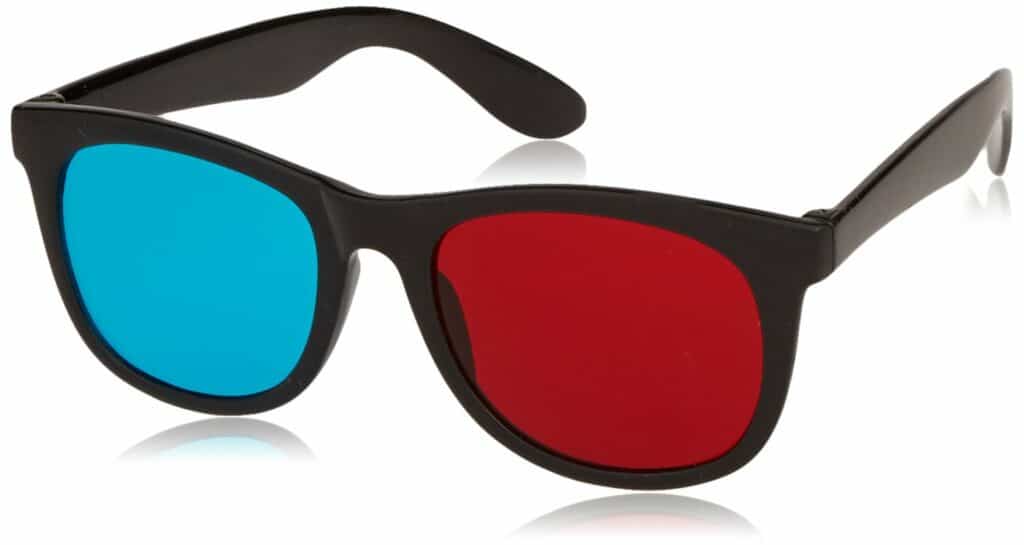So, you’ve decided to take some time off and go see a movie? Maybe you’ll watch a new Marvel movie with your friends, a nice romantic comedy with a girlfriend, or an animated movie with the whole family.
While we can’t really help you with that choice, we can help you get the best cinema experience by comparing the Dolby Cinema vs IMAX movie theater technologies and finding out which one is better.
So let’s get started.
Dolby Cinema vs IMAX
Going to the cinema? There’s a lot to consider. For instance, what is better? Dolby Cinema vs IMAX? Dolby Cinema has 4 times better resolution than IMAX, better surround sound and more comfortable seats, but IMAX has larger screens and is available at many more locations.
About Dolby Cinema

It’s practically impossible to have a conversation about video or audio processing or audio compression and encoding without mentioning Dolby Laboratories, the brand behind Dolby Cinema.
Moviegoers were first introduced to the Dolby Cinema experience at the Vue (then JT) Bioscopen Cinema in the Netherlands in 2014, and today Dolby has partnerships with several cinema brands, including AMC Theaters, Cineplexx Cinemas and Odeon Cinemas, to install Dolby Cinemas in them.
Dolby Cinema combines two Dolby Labs proprietary technologies, Dolby Vision and Dolby Atmos, so we’ll briefly explain them individually.
Dolby Vision
Dolby Vision is, as you might have guessed already, a visual technology, and it was developed by Dolby together with Christie Digital from California, US.
Compared to the traditional Xenon projectors, the technology offers better color, brightness and contrast thanks to dual 4K laser projectors (traditional projectors use lamps instead).
This means that you get 4x better resolution and about a 500 times higher contrast ratio!
Dolby Atmos
The other piece of tech of Dolby Cinema is Dolby Atmos.
This surround sound format developed solely by Dolby Labs gives visitors a full 3D sound experience.
It includes:
- 5 in-screen speakers
- 4 subwoofers
- 48 surround speakers
This means you can hear 128 distinct audio tracks from 64 different channels.
About IMAX

Whereas Dolby is a household name when it comes to video and audio technology in general, when it comes to cinema technology, IMAX is a lot more common in movie theaters.
So what does IMAX include?
The 4 main components of IMAX are:
- IMAX Camera – IMAX uses a 70mm film instead of the regular 35mm, giving a 12,000-by-7,000 pixel resolution and 18,000 lines of horizontal resolution. In comparison, the 35mm film camera can give 2096-by-1080p resolution and 6,000 lines of horizontal resolution.
- MAX Projectors – Most IMAX cinemas use dual 2K laser projectors (although newer ones use 4K), which provide a better viewing experience than the old-school lamp projectors.
- IMAX Screen – In front of the projector is, of course, the screen. If you’ve ever watched a movie and thought, “that’s a huge screen”, chances are, it was made by IMAX and is 52-by-72 feet big.
However, be warned that there are really two types of IMAX screens, IMAX and LIE-MAX. LIE-MAX uses only 2K projectors and is only 22% of the IMAX screen. - IMAX Speakers – Finally, you can’t only watch a movie; you also have to hear the sound. This is where the larger IMAX screen comes into play (besides making it easier to see a movie for those in the back), as IMAX can put more speakers behind the screen.
IMAX vs Dolby Cinema – Pros and Cons
Both Dolby Cinema and IMAX have upsides and downsides that can make or break your movie theater experience. So let’s take a quick look at the pros and cons of Dolby Cinema vs IMAX next:
Dolby Cinema Pros
- Superior image quality to anything on the cinema market. Dolby Cinema’s dual 4K laser projectors give 4 times higher resolution and 500 times higher contrast ratio than standard movie screens.
- Excellent surround sound. The proprietary Dolby Atmos technology provides the highest audio experience that visitors can get in the cinema with 5 in-screen speakers, 4 subwoofers and 48 surround speakers.
- Seat comfort is on another level. When it comes to seat comfort, Dolby Cinemas really pampers its visitors with fully reclining, leather and vibrating seats.

Dolby Cinemas Cons
- Poor availability. Finding a Dolby Cinema movie theater is perhaps the biggest hurdle of all. There are only 197 of these in the world, and around 80% or more are located in the United States and China. Europe has only 10 or so Dolby Cinemas.
- No 3D movies. Ever since Avatar back in 2009, 3D movies have become very popular. Unfortunately, it seems Dolby CInema is sticking to 2D and has no plans to get into 3D movie projections, which is a shame.
- Price. Of course, the leather, vibrating, reclining seats and the entire 3D surround sound experience come with a higher price tag which you’ll have to pay at the entrance.
IMAX Pros
- BIG screens. Like, really big. IMAX screens are significantly bigger than standard cinema screens (including Dolby Cinema).
- Widely available. There are more than 1,500 IMAX cinemas in the world, in 80 different countries. So finding one near you shouldn’t be an issue.
- 3D movies. Yes, you can watch both 2D and 3D movies in an IMAX cinema.

IMAX Cons
- LIE-IMAX. If you’re unlucky to get a theater with the LIE-IMAX screen, none of the good stuff we talked about IMAX will really count. The screens are much smaller, it’s not 4K but 2K, etc.
- Seat comfort. Okay, it’s not all that bad, but if I’m going to sit in the same seat for 3 hours plus, I’d like it to be a little more comfortable. The seats don’t even recline.
Dolby Cinema vs IMAX – Side-by-Side Comparison
| Features | Dolby Cinema | IMAX |
|---|---|---|
| Availability | Less than 200 theaters in 10-11 countries, mainly in the United States and China | More than 1,500 theaters in over 80 countries around the world |
| Image quality | 4 times the resolution of standard and digital formats as well as 500 times higher contrast ratio | 3 times the resolution of standard and video formats |
| Screen Size | Has regular screens around 50 feet in height | The Average IMAX screen (talking about “real” IMAX and not LIE-IMAX) is 75 feet high and many go above 100 feet even |
| Audio | Full 3D surround sound with 64 audio channels | Not a full surround sound with only 12 audio channels |
| 2D vs 3D | Only has 2D movies projections | Has both 2D and 3D movie projections |
| Seat comfort | Comfortable leather seats with plenty of space that also fully recline and vibrate depending on what’s going on in the movie | Regular movie theater seats |
Okay, so how does Dolby Cinema vs IMAX compare?
Let’s look at them side-by-side.
Availability
There aren’t that many Dolby Cinema theaters. In fact, out of 197 total, 127 are in the United States alone (AMC theaters).
Related Read: What is AMC Digital? Let us clear the confusion once & for all!
Add to this the fact that out of those, 127 are in the United States and 37 in China, leaving only 15 in the rest of the world: one in Japan, two in the United Arab Emirates and 11 in Europe in Austria (2), France (4), the Netherlands (5) and Spain (1).
On the other hand, IMAX theaters are available in 80 countries and over 1,500 theaters, so wherever you go to watch a movie, chances are, you’ll watch it on an IMAX screen.
Winner: IMAX. With fewer than 200 Dolby Cinemas globally, you’ll be hard-pressed to find one near you. The clear winner here is IMAX, with more than 1,500 locations worldwide.
Image Quality
Thanks to the dual 4K laser projectors, Dolby Cinema gives 4x higher resolution and 500x higher contrast ratio than regular movie screens.
In comparison, most IMAX screens use “only” 2K resolution (also dual), although more and more now use 4K resolution. Even then, IMAX only offers 3 times higher resolution than a standard screen.
Winner: Dolby Cinema. All Dolby Cinemas have dual 4K laser projectors, while IMAX is a mix of 2K (LIE-IMAX) and 4K. But even if we don’t include the LIE-IMAX screens, Dolby Cinema still takes the win due to superior resolution (4 times the regular movie screen vs 3 times that IMAX offers) and better contrast.
Image Format
Dolby Cinema offers a 2.40:1 aspect ratio, which isn’t bad but not great either. In fact, that’s pretty standard in theaters.
In comparison, IMAX displays movies at a 1.90:1 aspect ratio. This means it can use 26% more of the screen.
Winner: IMAX. The best part of IMAX is probably its screen size. They have some massive screens, so you won’t have to squint if you’re in the back and have to read the captions. Dolby Cinema is okay, but nothing to really talk about.
Related Read: If you’re looking for a REALLY wide viewing experience (270 degrees), check out our ScreenX vs IMAX comparison post.
Audio
Thanks to Dolby Atmos, you can hear pretty much any sound from the movie as you are in it almost.
Again, this includes 5 in-screen speakers, 4 subwoofers and 48 surround speakers for a full 3D surround sound experience.
On the other hand, if you go to an IMAX cinema, you’ll still get very good sound quality as IMAX can pack more speakers behind its large screens, but it’s not as immersive.
Winner: Dolby Cinema. Where IMAX was the clear winner in the previous category, here Dolby Cinema takes an easy win. The sound in one of the cinemas with their tech will really make you believe you’re in the thick of the action.
2D vs 3D
With Dolby Cinema, you can only see a movie in 2D, and they have zero plans for playing 3D movies.
IMAX, on the other hand, has both 2D and 3D movies. Again, be sure that you are watching on an actual IMAX screen with 4K laser projectors and not on the LIE-IMAX, which features dual 2K laser projectors.

Can’t find a 3D cinema close to you? Here is what you need to watch 3D movies at home.
Winner: Tie. Dolby Cinema doesn’t have 3D, but when it comes to 2D, it takes the win because of LIE-IMAX.
Seat Comfort
Dolby Cinemas provide an excellent and comfortable experience for your buttocks and back as the leather seats are reclining.
What’s more, the seats also add to the experience as they also vibrate. So, if you’re watching an action movie with lots of explosions, you will feel that.
IMAX seats are okay but not as good as Dolby Cinema has.
First, they’re not as big (a definite con if you’re a bigger individual), they don’t recline, and they also don’t vibrate.
Winner: Dolby Cinema. It’s like comparing first-class to economy seats. If I have a choice of spending 3+ hours in a reclining leather seat, with plenty of room to sit on, versus a run-of-the-mill seat, I’ll take the Dolby seats, thank you.
Also Read: Our Cinemark XD vs IMAX and RPX vs IMAX comparison articles
Frequently Asked Questions
Is IMAX better than standard?
Compared to standard movie screens, IMAX screens are larger. While a standard screen can be up to 50 feet high, an average IMAX screen is 75 feet in height. Additionally, the screens are curved so that you won’t see the edges.
Does IMAX have Atmos?
No, IMAX does not have Atmos. Dolby Atmos is a surround sound format developed by Dolby Labs, usually consisting of 5 in-screen speakers, 4 subwoofers and 48 surround speakers placed at different heights and angles around the cinema to provide a 3D surround sound effect.
Conclusion
These days you can stream almost anything via Netflix, Hulu, Amazon Prime or some other streaming service and watch the latest Hollywood blockbuster in the comfort of your own home.
Regarding Netflix, check out this article we wrote: How much is Netflix in 2022? Read all about Netflix plans there.
So why would you pay to go to the cinema?
Because watching a movie on a computer or TV screen can’t compare to watching it on a big screen, especially with loved ones.
The experience that you get when watching a new movie in a nice theater is one that you’ll talk about for days.
So which cinema will give you the better watching experience of the two?
Dolby Cinema vs IMAX?
It was a close race since both Dolby Cinema and IMAX have their upsides and downsides, but as far as pure experience goes, we’ll give the nod to Dolby Cinema for better image quality, excellent surround sound system and comfortable seating.
That said, IMAX has larger screens, which can also positively affect your experience.
So what do you think? Which is better when it comes to experience? Dolby Cinema vs IMAX?